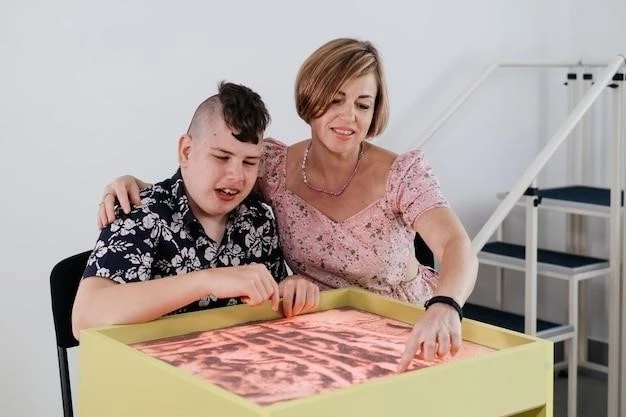The PIBI(D)S syndrome, also known as TTD type F, is characterized by a combination of symptoms such as ichtyosiform erythroderma, hair disorder, short stature, mental retardation, and photosensitivity.
What is PIBI(D)S Syndrome?
PIBIDS Syndrome, also known as Trichothiodystrophy Type F, is a rare genetic disorder characterized by a combination of symptoms including photosensitivity, ichthyosis, brittle hair, intellectual impairment, decreased fertility, and short stature. This syndrome falls under the umbrella of trichothiodystrophy, a group of autosomal recessive disorders. Understanding the distinct features and genetic basis of PIBIDS is crucial for proper diagnosis and management.
Clinical Features of PIBI(D)S Syndrome
PIBIDS syndrome presents with a unique set of symptoms including photosensitivity, ichthyosis, brittle hair, intellectual impairment, decreased fertility, and short stature. Understanding these clinical features is crucial for early identification and management.
Recognizing the Symptoms
Recognizing the symptoms of PIBIDS (photosensitivity, ichthyosis, brittle hair, intellectual impairment, decreased fertility, and short stature) is crucial for early detection and appropriate management of this rare genetic disorder. Identifying these key clinical manifestations can aid in timely intervention and care.
Causes and Inheritance Pattern
PIBIDS syndrome, a variant of trichothiodystrophy (TTD), is primarily caused by mutations in the XPB gene. This syndrome follows an autosomal recessive inheritance pattern. Understanding the genetic basis is essential for diagnosing and managing PIBIDS effectively.
Understanding Autosomal Recessive Inheritance
PIBIDS syndrome follows an autosomal recessive pattern of inheritance, where individuals must inherit two copies of the mutated gene (XPB gene) ─ one from each parent ─ to develop the condition. Carriers of one mutated gene typically do not show symptoms, highlighting the importance of genetic counseling and testing to assess the risk of passing on PIBIDS syndrome.
Differentiating PIBI(D)S from Other Syndromes
When distinguishing PIBIDS syndrome from other related conditions such as BIDS and IBIDS syndromes, it is essential to focus on the specific symptoms like photosensitivity, ichthyosis, brittle hair, intellectual impairment, decreased fertility, and short stature. Understanding these unique features can aid in accurate diagnosis and appropriate management strategies.
Comparing PIBI(D)S with BIDS and IBIDS Syndromes
When comparing PIBIDS with BIDS and IBIDS syndromes, it is crucial to focus on the specific symptoms present in each condition. PIBIDS is characterized by photosensitivity, ichthyosis, brittle hair, intellectual impairment, decreased fertility, and short stature. Understanding the unique features of each syndrome can assist in accurate diagnosis and tailored treatment approaches for individuals affected by these rare genetic disorders.
Diagnosing PIBIDS syndrome involves recognizing the unique combination of symptoms, including photosensitivity, ichthyosis, brittle hair, intellectual impairment, decreased fertility, and short stature. Testing typically involves genetic analysis to identify mutations in the XPB gene associated with this condition. Early diagnosis is crucial for implementing appropriate management strategies and improving patient outcomes.

Diagnosis and Testing
Diagnosing PIBIDS syndrome typically involves a comprehensive evaluation of symptoms like photosensitivity, ichthyosis, brittle hair, intellectual impairment, decreased fertility, and short stature. Genetic testing, especially analyzing mutations in the XPB gene, plays a crucial role in confirming the diagnosis. Physicians may also consider the patient’s family history and conduct various laboratory tests to further support the diagnosis of PIBIDS syndrome.

Treatment Options
Management of PIBIDS syndrome usually involves a multidisciplinary approach to address the diverse range of symptoms present, including photosensitivity, ichthyosis, brittle hair, intellectual impairment, decreased fertility, and short stature. Treatment strategies may focus on symptom relief, supportive care, and addressing specific challenges associated with the condition. Early intervention and regular follow-ups with healthcare professionals are essential for optimizing the quality of life for individuals with PIBIDS syndrome.
Managing the Symptoms of PIBI(D)S
Management of PIBIDS syndrome involves addressing individual symptoms like photosensitivity, ichthyosis, brittle hair, intellectual impairment, decreased fertility, and short stature through a combination of therapies. Treatment strategies aim to alleviate symptoms, improve overall well-being, and enhance quality of life for patients. Collaborating with a healthcare team experienced in rare genetic disorders is essential to create a personalized treatment plan tailored to each individual’s needs.
Prognosis and Outlook
Understanding the long-term implications of PIBIDS syndrome, with its unique combination of symptoms like photosensitivity, ichthyosis, brittle hair, intellectual impairment, decreased fertility, and short stature, is essential. With proper management strategies and regular medical follow-ups, individuals with PIBIDS can lead fulfilling lives. It is crucial to stay informed and engaged with healthcare providers to optimize the prognosis and quality of life for those affected by this rare genetic disorder.
Understanding the Long-Term Implications
Recognizing and comprehending the long-term consequences of PIBIDS syndrome, which includes a unique combination of symptoms like photosensitivity, ichthyosis, brittle hair, intellectual impairment, decreased fertility, and short stature, is crucial for individuals and their caregivers. Early diagnosis and appropriate management can lead to better outcomes and improved quality of life. Staying informed about the condition’s progression and accessing support from healthcare professionals can help manage the long-term implications effectively.
Research and Genetic Discoveries
The understanding of PIBIDS syndrome and related disorders like TTD has advanced through genetic studies focusing on mutations in the XPB gene, association with photosensitivity, and characteristic symptoms such as ichtyosiform erythroderma, hair abnormalities, and intellectual impairments. Ongoing research contributes to identifying genetic pathways, potential treatments, and improving diagnostic approaches for individuals affected by these rare genetic conditions. Staying informed about the latest advancements is crucial for healthcare providers and individuals with PIBIDS syndrome.
Latest Advancements in PIBI(D)S Syndrome
Recent studies have focused on understanding PIBIDS syndrome, a variant of trichothiodystrophy (TTD) marked by symptoms like photosensitivity, ichthyosis, brittle hair, intellectual impairment, decreased fertility, and short stature. Researchers have made progress in uncovering the genetic basis of PIBIDS, particularly mutations in the XPB gene. Ongoing advancements in genetic research aim to enhance diagnostic methods, identify potential treatments, and improve outcomes for individuals affected by this rare genetic disorder. It is crucial to stay updated on the latest developments in PIBIDS syndrome to guide clinical management and support affected individuals effectively.
Support and Resources for Individuals with PIBI(D)S
For individuals facing PIBIDS syndrome, accessing support and resources is essential. From genetic counseling to specialized medical care, various services can aid in managing the condition’s challenges. Connecting with patient advocacy groups and seeking guidance from healthcare professionals experienced in rare genetic disorders can provide valuable support and information. Additionally, staying informed about available resources and research advancements can empower individuals and families affected by PIBIDS syndrome.
Accessing Help and Information
Individuals with PIBIDS syndrome can benefit from accessing a range of resources and support services available to assist in managing the condition. Seeking guidance from genetic counselors, rare disease specialists, and patient advocacy groups can provide valuable information and emotional support. Additionally, staying informed about the latest research developments and treatment options can empower individuals and families affected by PIBIDS to make well-informed decisions regarding their care. Taking advantage of available resources can enhance the quality of life for those living with PIBIDS syndrome.
